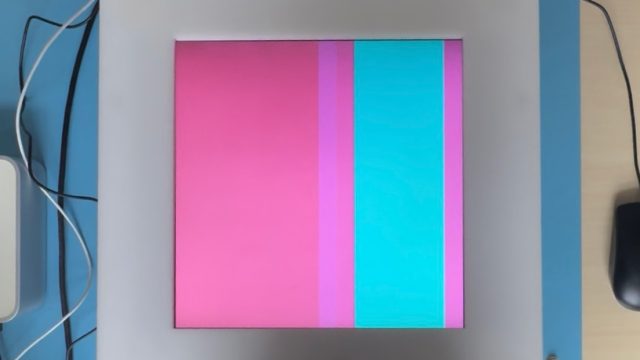On the 9th November a new major exhibition opened at the V&A: The Great Mughals: Art, Architecture and Opulence. This exhibition celebrates the extraordinary creative output of the Golden Age of the Mughal Court (about 1560 – 1660) during the reigns of its most famous emperors: Akbar, Jahangir and Shah Jahan. Many people do not realise that, by the time an exhibition opens, we at the museum have been working on it for a few years! From concept, to planning, design, object selection etc., a whole group of people have worked hard to create the exhibition. For us, conservators, the opening of the exhibition marks the final stage of work we started over two years ago, and what a great feeling it is when the objects you have been preparing for so long finally reach the galleries and people can see them on a wall, in a showcase or on a plinth where they can be enjoyed by everyone!
In the Sculpture Conservation Studio at the V&A we started working on objects for the Great Mughals exhibition back in spring 2022. We checked the condition of the objects and planned and carried out any necessary treatments well in advance so that the objects are safe to be displayed and looking their best. One of my favorite aspects when preparing objects for exhibitions is the opportunity to immerse yourself in the theme, learning from a particular type of artefact, an historical period or artistic technique. During these two years we have conserved some fascinating objects and through the work we have done on them have come to learn a great deal more about them than we knew before.
One of the objects we worked on, and that people will be able to enjoy in the exhibition, is a carved white marble jali. Jalis are a typical South Asian decorative element, used as external windows or indoor screens. The Mughal craftsmen transformed blocks of solid marble into finely carved windows and screens with geometrical or naturalistic ornamental patterns that instead of blocking the view allowed those inside to see through the stone.

This jali dates to around 1640. Stylistically, its design is similar to a screen still in situ in the central tomb chamber of the Taj Mahal. It had been originally part of the India Museum collection from where it arrived to the Victoria and Albert in 1879 when the India Museum was closed. The jali had been on display at different points in its history and, since the 1990s, in Gallery 41 in the V&A. The exhibition provided us with a great opportunity to give it some attention.
The jali arrived in the Sculpture Conservation Studio in September 2022 when we assessed it and did a quick clean so that it could be photographed for publication. It then returned for a full treatment a few months later, in the summer of 2023 and my colleague Jessica Mantoan conserved it in full. There were a lot of problems with this beautifully carved object, most importantly the many breaks, repairs and stains present. The white marble jali had been restored in the nineties and a look under UV showed us where the breaks and repairs were, and allowed us to better understand the fragility of the piece. Furthermore, over the years of display, the white marble had become very dirty with dust that had settled in the waxed surface and would not be removed by simple dusting. There were also paint marks along the edges from the cyclical repainting of their mounts over the years, plus other unidentified stains.


We tend to think of stone being very tough and resistant, but marble is mostly made up of calcite and is very sensitive to a lot of substances and solvents, water included! We had to test many solvents to find not only the one that cleaned the different stains best, but also did not cause any damage to the stone.


Deionised water proved to provide good levels of cleaning without causing damage, but in order not to damage the stone we had to carefully control how much water was applied. This, together with the intricate nature of the carved decoration, made us decide to test cleaning it with a gel rather than a liquid. We tried two different types of gelling agents and the tests showed that an agar agar-deionised water gel was a really effective cleaning method. Agar agar is a gelling agent extract from red algae, and it’s largely used in the food industry. When the agar agar is mixed with water and heated up, it creates a transparent liquid solution able to jellify at room temperature.

During the cleaning treatment the liquid agar gel was poured directly on the marble screen and smoothed with a brush, allowing the reach of the most inaccessible and intricate areas of carving. As it cooled and set, the agar created a porous gel able to absorb stubborn dirt and soiling in just few minutes. The final step was to peel off the gel, leaving the marble surface uniformly cleaned. With this method, not only were we able to remove the paint stains, but also the marble regained its whiteness.



As a conservator, the treatment of this Mughal jali has been an amazing and satisfying experience: the impressive visual- aesthetic improvement after cleaning it now allows us, and anyone who will visit the exhibition, to appreciate it in all its original beauty.




We enjoyed seeing the precision and care of the object being handled with great care. We need more blogs like this for the future of the museum.
The article is very detailed and conveys the dedication and ingenuity of the conservators in preserving the exquisite beauty of this Mughal work of art!
level devil – not a troll game
The designs are very elaborate, requiring meticulousness geometry dash jump and precision.
There were a lot of problems with this beautifully uniquesolarusa carved object, most importantly the many breaks, repairs and stains present.
The restoration of the C16th white marble jali showcased here highlights not only the skilled craftsmanship of Mughal artisans but also modern conservation expertise. For a different kind of challenge that tests your reflexes and patience, check out Level Devil – an unforgiving yet fair browser game with 16 devilish stages: https://queensgame.io/games/level-devil
this sounds absolutely fascinating! The conservation of a C16th white marble jali for ‘The Great Mughals’ exhibition is incredible. It makes me wonder what kind of artisan I’d have been in that era. Sometimes it’s fun to take personality test to explore those ‘what if’ scenarios!!
Start discovering thousands of io games online and try to dominate the leaderboard.